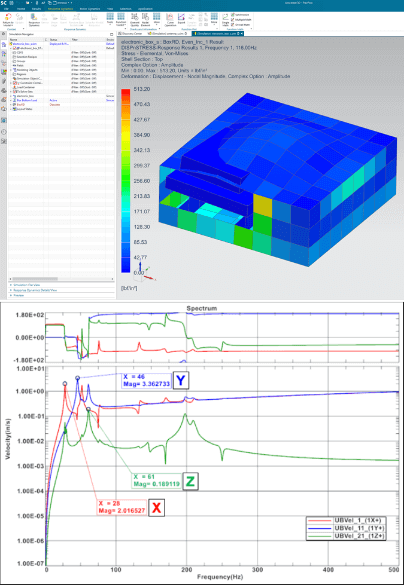Discover the similarities and differences between Simcenter 3D Response Dynamics and Simcenter Nastran Dynamic Response to learn which software is best suited for your dynamic analyses.

When you need to simulate the dynamic response of structural systems, you have two major software options: Simcenter 3D Response Dynamics and Simcenter Nastran Dynamic Response. Both approaches achieve similar goals and predict similar responses due to dynamic excitations, but they have different user interfaces and capabilities that make each suited to certain types of problems and workflows.
 Simcenter 3D Response Dynamics and Nastran Dynamic Response both allow you to use the normal modes and static corrections generated by Simcenter Nastran to compute a structure’s response to any type of dynamic load:
Simcenter 3D Response Dynamics and Nastran Dynamic Response both allow you to use the normal modes and static corrections generated by Simcenter Nastran to compute a structure’s response to any type of dynamic load:
- Time or frequency dependent
- Harmonic or random
- Excitation by point force, distributed force, or enforced motion
Simcenter 3D Response Dynamics provides an interactive graphical user interface that streamlines the generation, execution, and postprocessing of load cases so you can efficiently evaluate the dynamic response of structures.
Simcenter Nastran Dynamic Response allows you to solve a larger variety of dynamics problems, such as direct response computations, more types of damping representations, acoustic analysis, and complex eigen analysis, and it enables solution customization via Simcenter Nastran DMAP.
This webinar will describes the commonalities and differences of Siemens Simcenter 3D Response Dynamics and Siemens Simcenter Nastran Dynamic Response.
Topics:
- Features and functionality of Simcenter 3D Response Dynamics
- Features and functionality of Simcenter Nastran Dynamic Response
- Comparison of Response Dynamics and Nastran Dynamic Response
- Q&A
